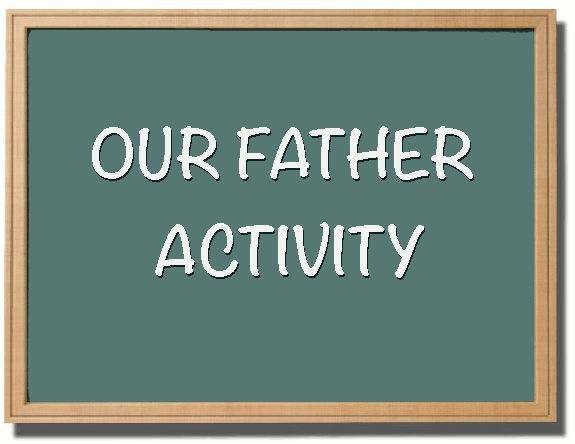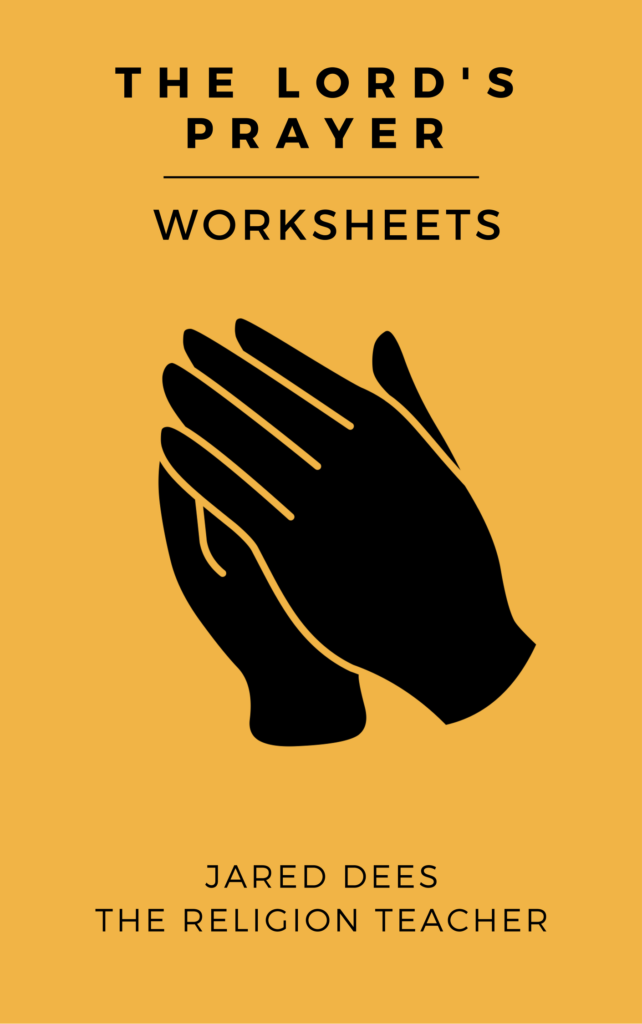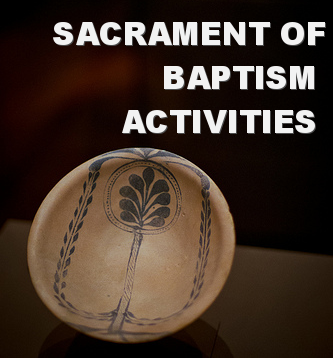I spent a couple of days in prayer at a monastery not long ago and when I got back and told my students about the experience and the life of a monk, they’re response was a little disheartening.
“How boring!” one student exclaimed.
“ALL day long? They just pray all day long?” asked another student with a confused look on her face.
Let’s admit it. Prayer can be boring and if we’re not careful, our students will only think of prayer as a boring activity to do.
Even the Apostles fell asleep while Jesus prayed at the Mount of Olives. Saints, like St. Therese of Liseiux, admit to falling asleep in prayer. Sitting and praying is not typically the most energizing activity.
To add a little excitement–while keeping a sense of piety–I introduced students to a fun activity to learn to pray (and learn) the Our Father (the Lord’s Prayer).
A Fun Our Father Activity
Before we got started, we reviewed the words to the prayer, praying them aloud as a class.
Then, I introduced the Our Father activity. Here is how I would suggest doing it yourself:
1. Break students up into groups of two or three.
2. Assign each group a phrase or section of the Lord’s Prayer:
Class: Our Father, who art in heaven . . .
Group 1: Hallowed be thy name . . .
Group 2: Thy Kingdom come, thy will be done . . .
Group 3: etc.
3. Have each group come up with hand or body motions that correspond with the words of the prayer.
Do the first section together as a class to model what you want students to do in groups. For example, you might demonstrate “Our Father, who art in heaven” by pointing or raising your hands to the sky while you say the words to the prayer. Have the entire class practice the words and hand motions with you as a class.
4. Give the students ten minutes or less (depending on the number of phrases they have) to come up with hand motions to correspond to their part of the prayer.
Move around the room and check in with each group. Have them demonstrate what they have so far. Make sure the students who are shy or self-conscious participate too. Ask each group questions about why they chose that particular hand motion for each phrase. Make sure the motions connect with the real meaning of the prayer. Clarify any questions about the words.
Give the students a warning when time is up and make sure they practice their hand motions because they will need to teach the rest of the class when they are done.
5. Give each group the opportunity to teach the rest of the class the hand motions that correspond to the prayer.
Have the groups teach the motions and then have the class imitate them. Make sure each group can explain the significance of the hand motions and why they line up with the phrase they were assigned. As the class learns the motions from each new group, have them pray the Lord’s Prayer with the hand motions from the beginning.
Make sure you are learning the hand motions as well so you can help the students when they get stuck, but let them learn the motions for themselves. (The first time I did this activity, I actually messed the class up more than I helped!)
6. Have the students pray the Our Father with the hand motions from beginning to end.
At the end of the class make this prayer with hand motions the closing prayer. The next time you meet, have the students pray it as the opening prayer. Repeat the prayer periodical throughout the year and discuss the meaning of the Lord’s Prayer as you do so.
Here is a video to explain why this activity is so effective:
Other Lord’s Prayer Resources
Video: The Meaning of the Lord’s Prayer
In this video I share a brief reflection on the meaning of each phrase in the Lord’s Prayer:
The Lord’s Prayer Worksheets from The Religion Teacher
Using the worksheets in The Religion Teacher’s Lord’s Prayer Worksheets, your students will add meaning to the words of the Lord’s Prayer by making connections between each phrase and their personal lives. They will do brief meditations on each part of the prayer making the words more meaningful and memorable.





Hi, Jared
I am hard at work to prepare myself for the catechism classes for it will be my first time to teach. In view of this I am hard at work going through all your advices and tips. It is unfortunate that I have not yet got my 31Days to Becoming a Better Religious Educator book which I have ordered from Amazon. I am now full of confidence that with your help I am going to be a good educator.
Thanks may God bless you and what your doing.
Great idea!! I’ll try that in my next class. Actually I though that might be used in any of the study book chapters, like Moses. They can try to explain the story of Moses in hand gestures. It’s worth a try.